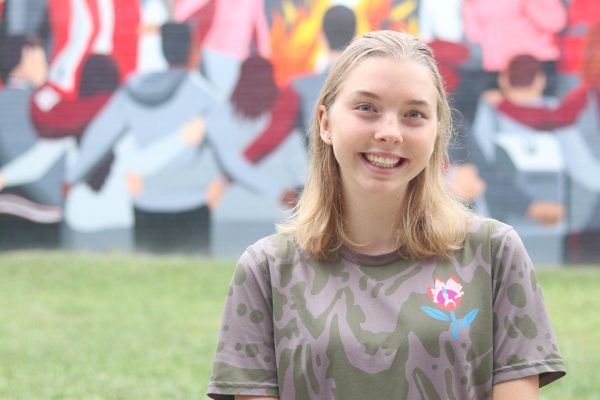Questions at the intersection of politics and the classroom are more difficult to resolve than ever. With the presidential election at the forefront of American politics, teachers must navigate the increasingly divisive issues which filter their way into the student body.
Political polarization is a communicative phenomenon that has taken strong hold of American politics. This is the first obstacle for teachers. The language that accompanies various beliefs tends to be aggressive and insulting, and leaves little room for easy conversation.
Take the campaigns of both Kamala Harris and Donald Trump this year. With varying levels of intensity, each used combative language to attack the opposing party candidate. In many circles, Trump’s image has become synonymous with misogynistic and racist attacks. As recently as his last rally, he aimed slurs and provocative language towards multiple women in government. In her own version of political attack, Harris has belittled Trump’s crowd sizes and insulted his wealth.
The normalization of “us-versus-them” rhetoric trickles down to the classroom. Recently, a Kansas University professor made national headlines when he told his class that men who won’t vote for a woman in the presidential election should be lined up and shot.
The professor’s language is eerily similar to recent insults hurled at the national level. At a rally just last week, Trump implied that former senator Liz Chaney should be shot. Correlation may not equal causation, but there is no doubt that the violent rhetoric of our nation’s most prominent figures has begun to infiltrate everyday language.
The widespread reaction to the viral video of the professor made one thing clear: statements of political violence do not belong in the classroom. United States history teacher Valerie Schrag explained its impact.
“What he said is an example of how we have marginalized each other,” she said. “Somebody may have a different political view. . . but that doesn’t make them evil.”
Schrag emphasized the importance of evaluating multiple sides of political issues in the classroom.
“I think the most important thing that a teacher can do is teach their students how to analyze evidence and how to recognize multiple perspectives so they can make the decision for themselves,” she said.
However, even this strategy raises its own challenges. In an era of strong identity politics concerning Harris’s bid for election and an unrelenting attachment to Trump’s cause even in what voters consider his lowest moments, the American political spectrum has become something close to a cult of personality.
“We have a situation now where there’s deep divisions in our political culture that are centered around a person versus a set of ideologies, and that’s not a healthy political system,” former government teacher Fran Bartlett explained.
Teachers are forced to reckon with the arguments behind party attachment, which are not always as clear-cut as a set of ideologies that can be analyzed in the classroom. Bartlett explained that since 2016, the arguments continue to lean toward an idealized person or culture.
Ironically, Trump himself infamously acknowledged this fact in 2016, when he boasted that he could shoot someone in broad daylight and not lose any voters. With less outright violence, the Harris presidential campaign has also absorbed a strong degree of identity politics, clinging to viral cultural movements, like Charlie XCX’s BRAT Summer.
“When you base your entire party platform around one individual, which both of our parties do. . . .that is inherently dangerous to democracy,” Bartlett explained.
Perhaps the most difficult of conversations in the classroom pertain to the issues themselves. More specifically, those which concern the lives of students in the classroom.
Many of the most prominent, albeit controversial, political issues involve certain groups of individuals, and the rights given (or not given) to them. In a school like LHS, those groups are found in every classroom.
English teacher Jonathan Harrison explained that threats against these groups often come from one side of the political spectrum, creating a tough environment for bipartisan discussion.
“Sometimes I worry that I don’t condemn enough policies that are obviously racist, sexist, cruel, punching down, etc,” he said. “And to be honest, the reason I don’t do that right now is because they are mostly aligned with one political faction.”
Schrag explained the effect of such policies when she teaches.
“It’s hard to keep your politics out of your classroom when it becomes a social justice issue . . .[and] when it has to do with the humanity of the students that I see in my classroom every single day,” she said. “But to me, it’s not politics, it’s human rights.”
It’s not only identity politics. Take libel law, taught in both government and journalism classes. Some of the most current examples of this law are centered around some very conservative figures: the cases of Alex Jones, Rudy Giuliani, and Fox News are among them.
Teachers must balance their own beliefs, nonpartisan discussion, and respect toward every identity in their classroom.
“We spend so much time trying to make students comfortable,” Harrison explained. “I don’t want anyone teased for their beliefs…and even if I were to find them reprehensible, I still wouldn’t want them picked on.”




